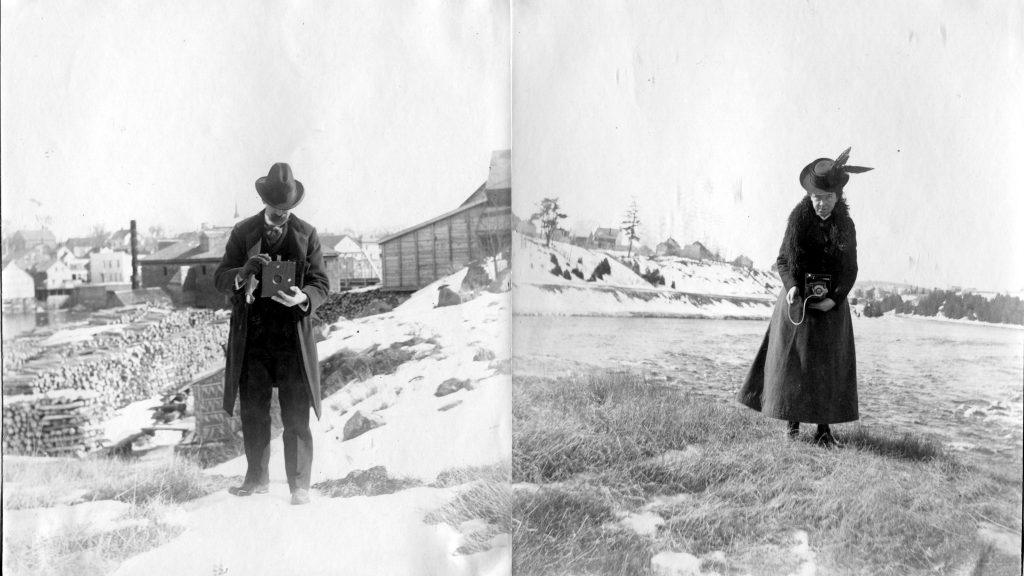
The circa 1920 photograph above is titled “Dueling Cameras At Ten Feet”. The scene is the Calais waterfront and the two photographers are Ned Lamb and Emma Boardman.
About Ned, you will learn much more if you read on, as to Emma, she was a prominent member of the Calais and St. Stephen Boardman family and an artist of some note about which we will write more in a later article. Both were accomplished photographers in an era when taking a picture was a very fine art and above their cameras are pointed at each other.
Over the years we have written hundreds of articles on the history of the St. Croix Valley and invariably our most trusted source of local historical information has been Ned Lamb. A Milltown native, he loved the valley and especially the river and possessed a prodigious memory and talent for writing. Ned’s historical articles have endowed us with an historical record which few communities possess. We thought it appropriate to introduce you to Ned so the next time we mention him in an article you will know something about him. This biography was written by Fred Becker, as a foreword to Ned’s Valley, a publication of the historical society.
Biography of Harry Edgar “Ned” Lamb by Fred Becker:
Ned was a private person and never mentioned any details about his private life in his articles. Those few people remaining who knew him said he did not mention his family. Research of available census records, vital statistics records and other records has yielded some information into his past but it is sketchy at best. Some of the records are contradictory and are very confusing.
He was born in Milltown on October 10, 1874. There are two birth records at the Calais City Building both of which were cited as being from the family bible, one being October 10th and the other October 17th this is but one example of the conflicting information in the records. The name on his birth record is listed as Edgar C. Lamb. The first ancestor I was able to find was James Lamb. He was the father of Robert J. Lamb who was born in about 1817 and married Lydia W. Pickens in 1842. Ned’s father, Oramendal was their first-born in 1844. Oramendal, who was a lumber surveyor, married Emma Strout from Alexander in 1867. Their first-born was Edith who according to census records died of diphtheria around 1880. Ned was their only other child. Emma died in 1890 and Oramendal remarried to Addie Hinds and they had one daughter, Carrie.
With the exception of a period of less than twenty years when he lived in Bangor, Ned spent his entire life in Milltown.
He was educated first in Milltown at the Grammar school and later graduated from Calais Academy in 1895. Judging from his writing ability and aptitude for study, it would seem unlikely that the delay in completing his education was due to a lack of ability. It was a fairly common occurrence in that time for young people to work in order to help support their family. In his obituary there is mention that he had worked in the sawmills. In the 1900 census his occupation is listed as weaver at the cotton mill.
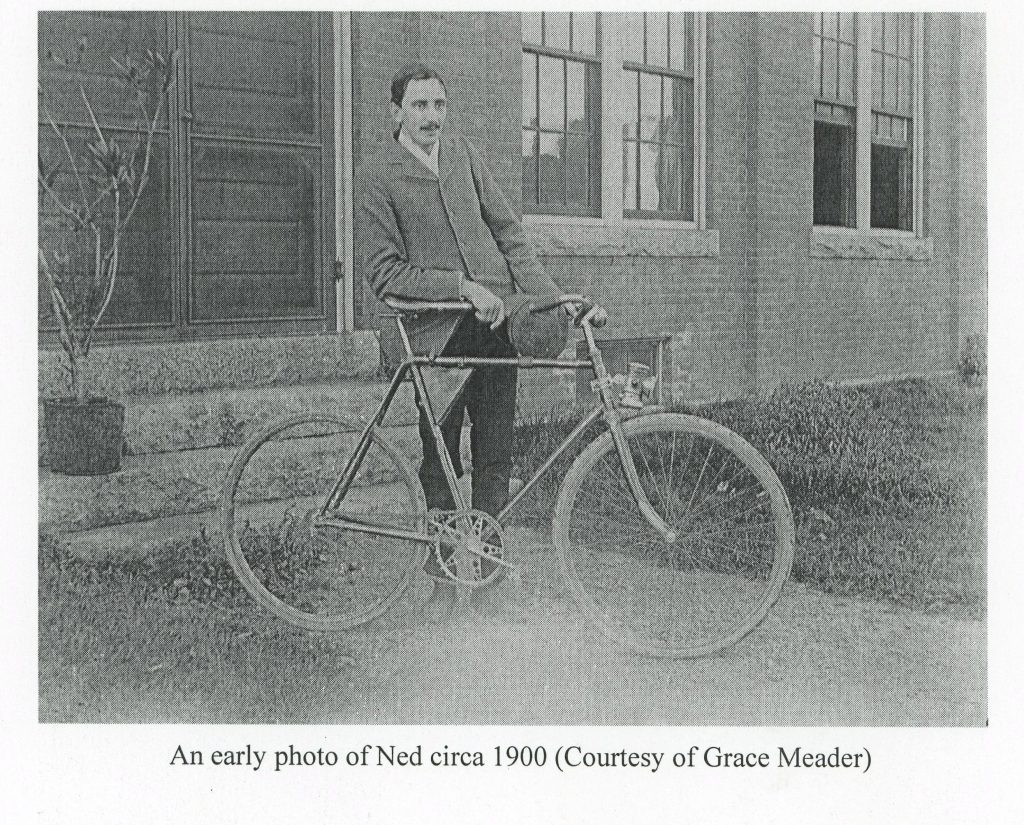
The earliest listing of Ned in a Bangor directory is 1905 and he was listed as a photographer at J. F. Gerrity’s studio. At that time they were located in the old Norumbega Hall, which was destroyed in the great Bangor fire of 1911. They relocated to 50 Central Street.
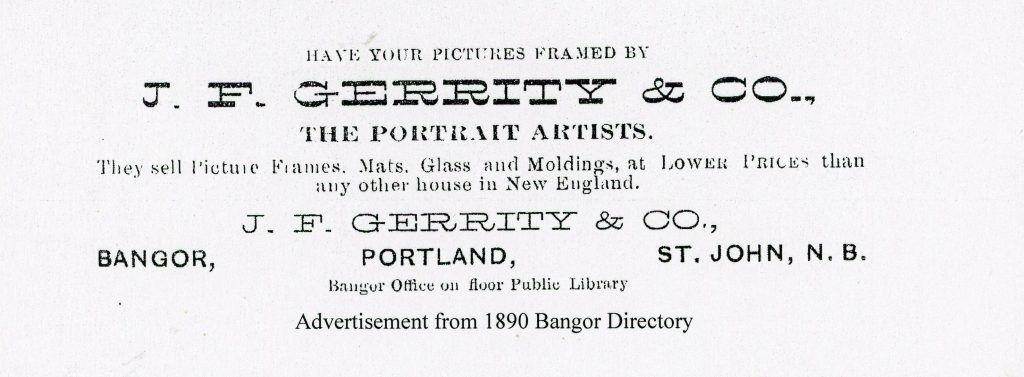
The above is from the 1890 Bangor Business Directory.
How Ned came to get the job there we may never know, but this is where he learned the photography trade. One possibility was a man named George N. Lamb who was listed as an artist there, although we have not been able to establish a family connection between them. We do know that J. F. Gerrity may have been in Calais during 1889 because of portraits that he drew of George Downes and George Chase. These would have had to be made from some other image, as both men had been deceased for many years when they were drawn.
Ned’s cousin, Minnie Sprague, had a close friend, Mae Mitchell, whose family was living on Boardman St. near the Sprague family according to the 1880 census. The 1890-91 directory lists the family still living on Boardman St. and the 1896-97 directory lists them as living on Chapel St. Mae’s mother passed away and her father remarried on September 27, 1899. Apparently there was tension between Mae and her stepmother and she went to live with her brother in Medfield, Mass. Grace Meader has two letters from Mae to Minnie expressing Mae’s homesickness, frustration with her father’s remarriage and in her words “I don’t have a home”. She stated that she missed Minnie terribly and would like to see her. We don’t know when Mae returned to Milltown but her father died in 1905 and from the following pictures we know that she was back in town in August 1905. When Mae and her family were living on Chapel Street, they were very near the Lamb home so it is likely that she and Ned knew one another for some time.
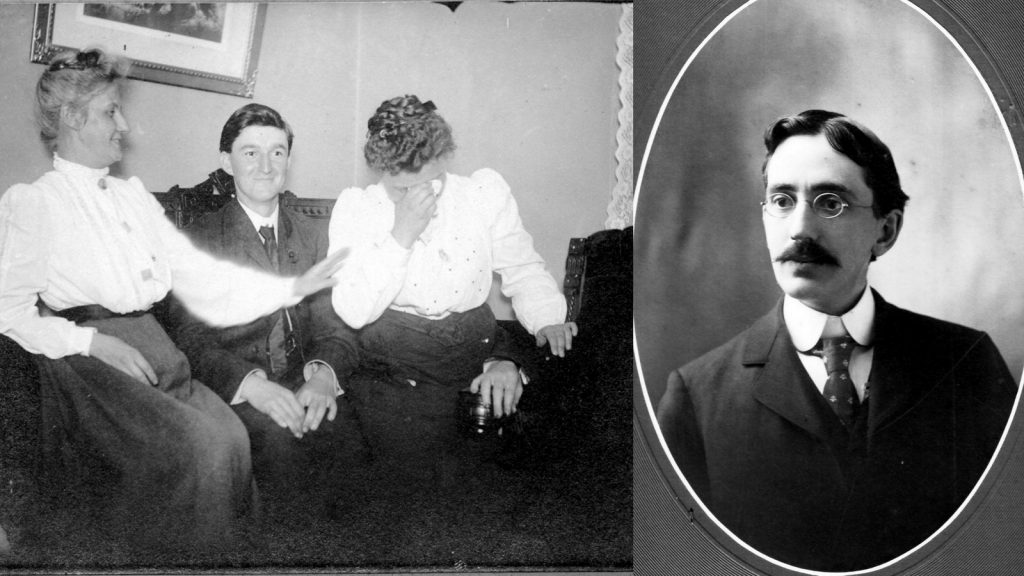
On June 6, 1906, Ned and Mae were married and left for Bangor.
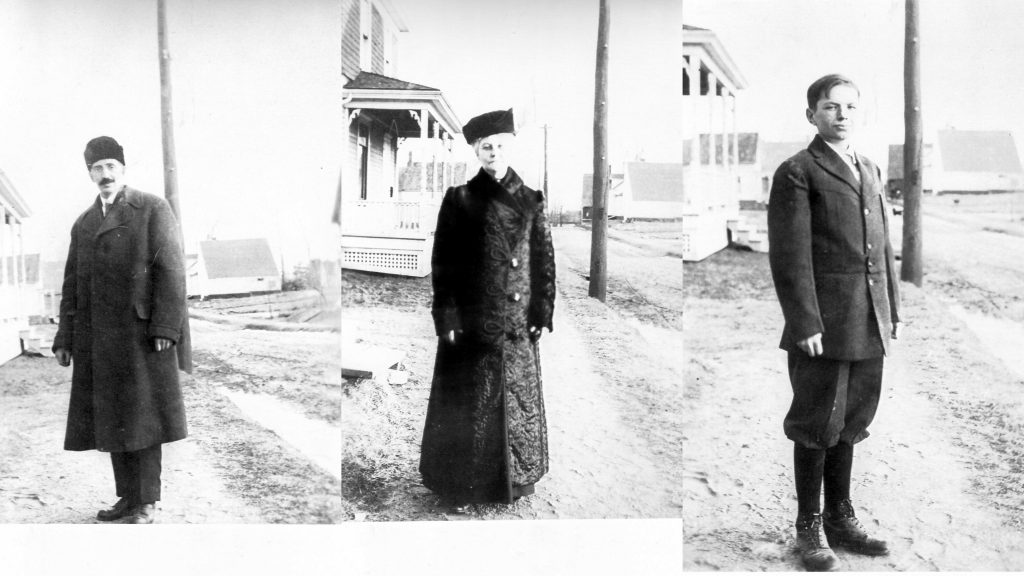
Grace thinks that possibly William was Mae’s half-brother from her father’s second marriage. The 1910 and 1920 census list William as Ned’s step-son.
They lived in Bangor until Mae died in 1921. In an interview, Ned was quoted that after Mae’s death “things fell apart” and he returned to Milltown to live with his father. We don’t know what became of William. The Bangor directory of 1923-24 lists Ned as having moved back to Milltown.
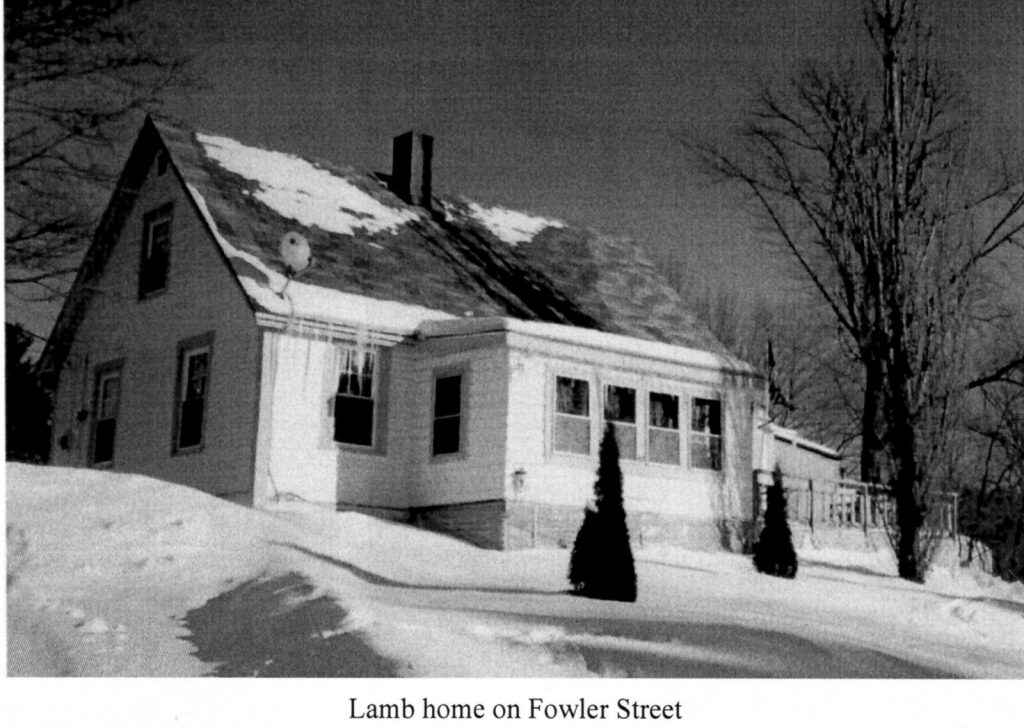
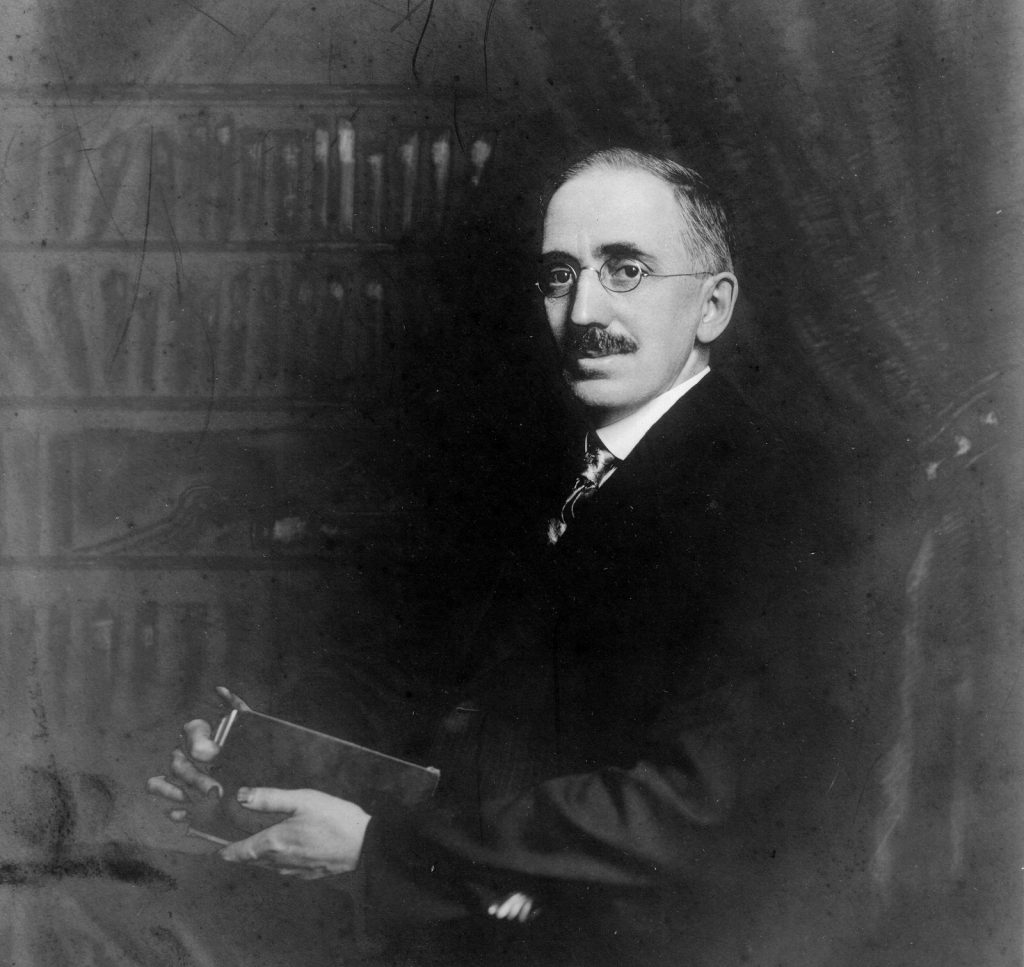
Ned continued his career in photography and opened a business in Milltown, where he offered developing and printing services as well as actively photographing.
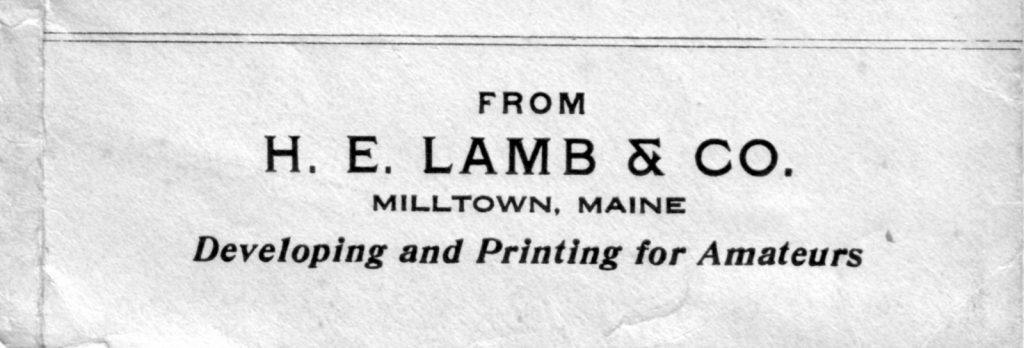
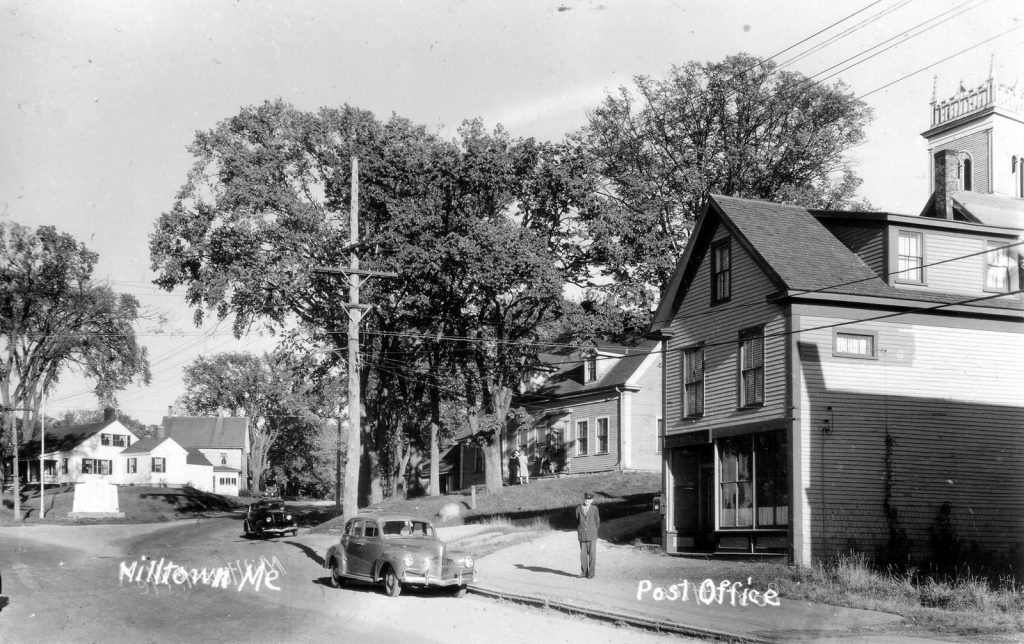
In later years, Ned moved his business to his home. Ned’s father passed away in 1924. Ned’s first article appeared in the Calais Advertiser in 1928 and he continued his career in journalism, which was to continue for nearly thirty years. In addition to his regular weekly “Milltown Diary” column he was very prolific in producing a number of feature articles about the history of Calais and the St. Croix Valley, many articles accompanied by photographs that he had taken.
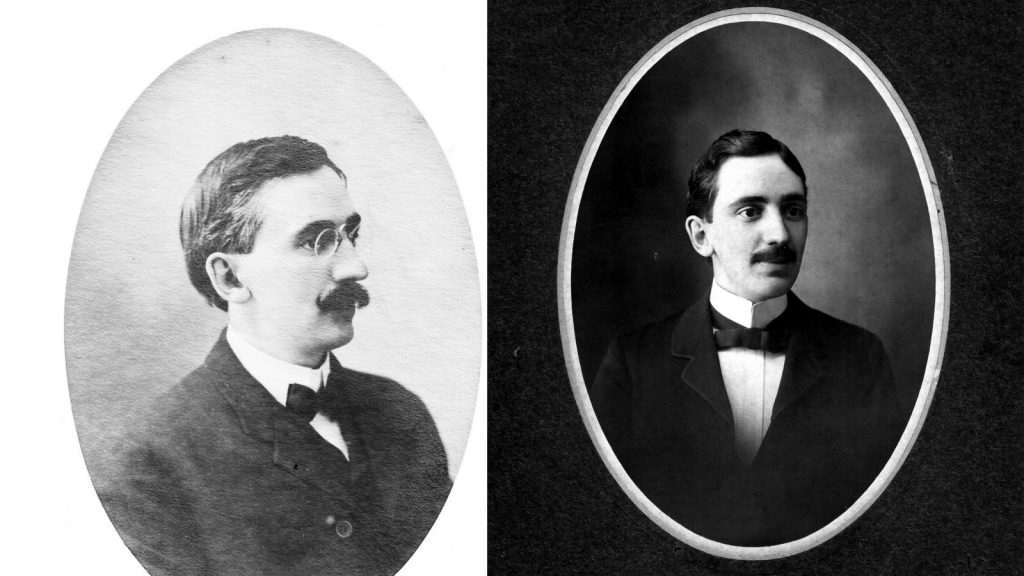
In addition to his other activities as listed in the obituary, which follows, he was one of the founding members of the St. Croix Historical Society in 1954. Ned died in 1958 and as the Advertiser noted there were to be no more Milltown diaries.
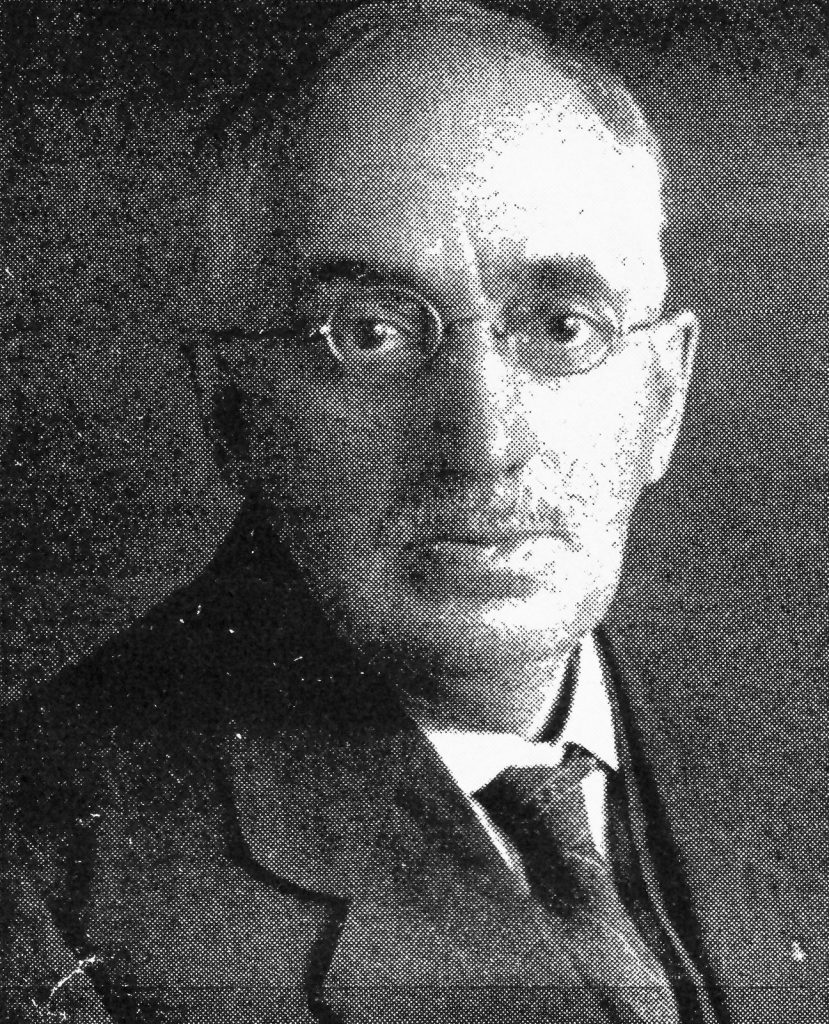
Harry Edgar Lamb, senior columnist of The Calais Advertiser, died March 20 at the age of 83. Though ill for some time, his incisive mind and prodigious memory were keen right to the end of a lengthy career of photography and chronicling the historical events of the St. Croix River Valley. The staff of The Advertiser immediately felt its loss and the paper itself will never be quite the same without the byline – “by H. E. Lamb.”
Two of Mr. Lamb’s close colleagues, Roy Ryan and Arthur Kallenberg, both newspapermen themselves, have contributed the following data and comments regarding the man from Milltown. Mr. Ryan’s account is presented first:
Harry Edgar Lamb was born in Calais on October 10, 1874, the son of Mr. And Mrs. Oromendal Lamb and died in the Calais Regional Hospital Thursday, March 20.
Mr. Lamb was educated in the Calais schools and was a graduate of Calais Academy. He worked in a local saw-mill before taking up professional photography. He was employed for many years in Bangor but following the death of his wife he returned to Calais and opened a photographic studio at Milltown, Maine. He retired a few years ago.
A gifted writer, for many years his keen mind created the interesting items that were read far and wide in the “Milltown Diary” column in the Calais Advertiser.
Always interested in things of today and also of historical interest, he penned many authentic stories of the early history of Calais and vicinity which were published in the Advertiser.
His kindness and friendliness will be remembered especially by those whom he helped in their studies while they were going to school.
He was one of the first to bring attention to the history of St. Croix Island where the first white settlers arrived in 1604.
Interested in the Calais library, he was a valued member of the board of directors and was instrumental in securing and placing on display therein articles from Calais, France.
He was a Mason, a member of St. Croix Lodge No. 46, and was at one time master of the lodge.
He is survived by a nephew, Frank J. Leuthner of Forest Lake, Minn.
Mr. Kallenberg’s comments follow:
“It was with regret that we learned of the passing of Ned Lamb, a long-time contributor of news to this paper.
“Mr. Lamb had a rambling style of writing – whimsical at times, at other times humorous. Sometimes he would pull no punches and write a very caustic criticism of the way, as he put it, ‘how things are going on in this town’.
“We’ll never forget that along about this time of year when all of us had been eagerly awaiting the first day of Spring, he’d start off his column, ‘The Milltown Diary,’ with this classic, ‘Oh, Spring, you nasty thing.’
“Possessed of a wonderful memory and conducting an intensive search through old documents and records, he gave to us through his writings more than a glimpse of the long ago days in Calais. We hope that all the material he gathered over the years has been carefully taken care of.
“When a paper, be it a daily or a weekly, finally goes to press, in newspaper parlance, the city room, the editorial writers, the press room, all say, ‘It’s been put to bed.’
We hope in all sincerity, Ned, that the ‘Milltown Diary’ has found a soft and downy bed.”
Funeral services for Harry Edgar Lamb were held Saturday at the First Baptist Church with the Rev. Walter Lyons officiating.
Members of Orion Lodge OES attended the service in a body for Mr. Lamb who had been a past worthy patron. Masonic services were held by Lodge 46, and members of the lodge who were bearers were Raymond Tracy, Wilbur Fitzpatrick, Harold Deacon, Sr., Francis Reed, Dexter Thomas and Thomas Boyd.
Addendum:
We recently found the first page of a newspaper article of uncertain date and publisher – we believe it is early 50s – in which Ned is interviewed about his historical writing. Naturally we wish we had the entire article but will provide what we have:
HISTORIAN IS APPRECIATED
H.E. LAMB KEEPS TABS ON ST. CROIX VALLEY
Prophets may not be appreciated in their own countries, but historians are. Without them the people of many a Maine village would be wholly ignorant of their past. In Calais and Milltown everyone knows H.E. Lamb, whose age is an historical secret and is thoroughly conversant in anything that’s happened around here in the last 100 years or so.
“This town is certainly indebted to Mr. Lamb”, said a filling station operator in Robbinston the other day. “We’d have no record of our past if he hadn’t bothered to collect the information and write it up for the papers. I think most everyone reads his articles and they can all tell you something about the old days.”
Mr. Lamb was born in Milltown, but he won’t divulge just how long ago. He worked for fifteen or sixteen years in Bangor for James F. Garrity and Co. “J.F. Garrity Co. is something else again.” They were a lumber concern.
His wife died in Bangor and everything seemed to break up for Mr. Lamb. He came back to Milltown where his father was living. He has been here ever since.
“I went right on with my photography here and in Calais” he said in his combination kitchen and office a short time ago. “I’d always been a great one to read and I like to save old newspaper clippings, timetables, posters, ticket stubs and other keepsakes of the past.
“Of course I’d piled up quite a collection of negatives and prints too. I like to run through them and see the way things used to look. I got to telling the boys stories about the Calais that used to be.”
“They’d say, “Why in thunder don’t you print that?” So I got myself a typewriter and mastered the hunt and peck system and started writing. Sometimes I’d claim I’m a direct descendant of Charles and Mary Lamb and you know they were both sort of crazy.”
“I don’t know just why I took to historical stuff. Other people know things as soon as I do, but they don’t keep a record of them.
I save things and I have worked out a fairly good system of filing so I can lay my hands on what I’m looking for, if I look long enough. I put my typewriter here on the kitchen table not too far from the stove and its coffee pot. I rummage through my files and peck away at stories. I’ve got the material here got any number of feature stories.
‘The Calais Advertiser prints a contribution of mine every week and the St. Croix Courier, across the river in St. Stephen, uses one once in a while.
“I’m working on a piece now about all the different times around here,” Mr. Lamb said as he pulled a half-written sheet from his machine. ‘We’ve got God’s time, Eastern standard time and Atlantic time, and now we’ve added daylight savings. It could get pretty confusing.
“Also I’m trying to work up………. (end of first page)
To read Ned’s writings, purchase our compiled collection here:
Ned’s Valley: A Collection of Articles by H. E. Lamb About the St. Croix River Valley
